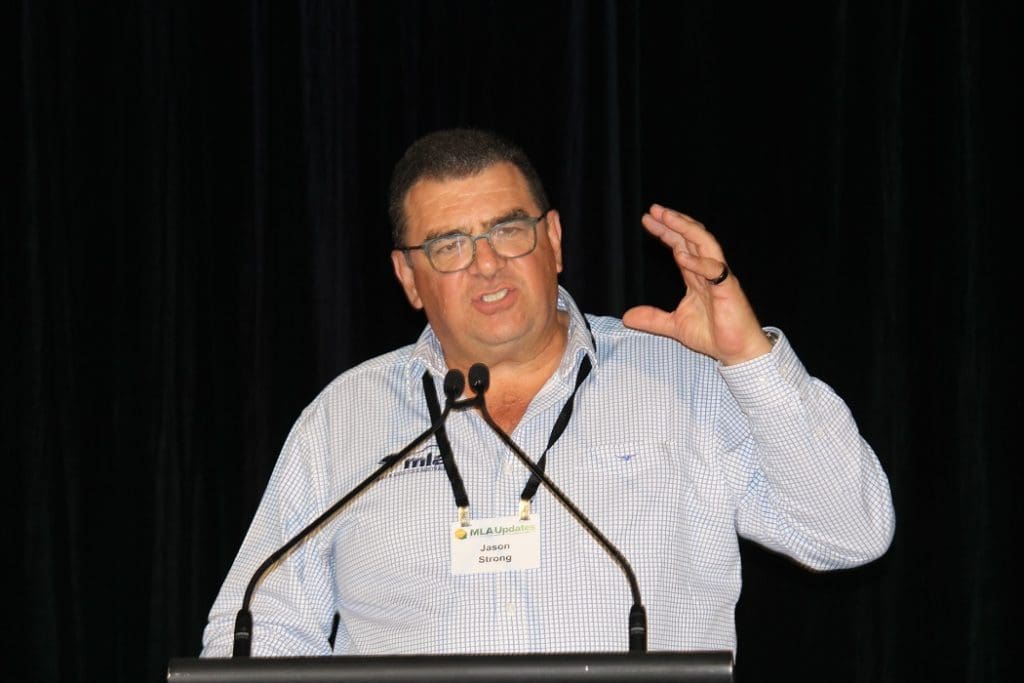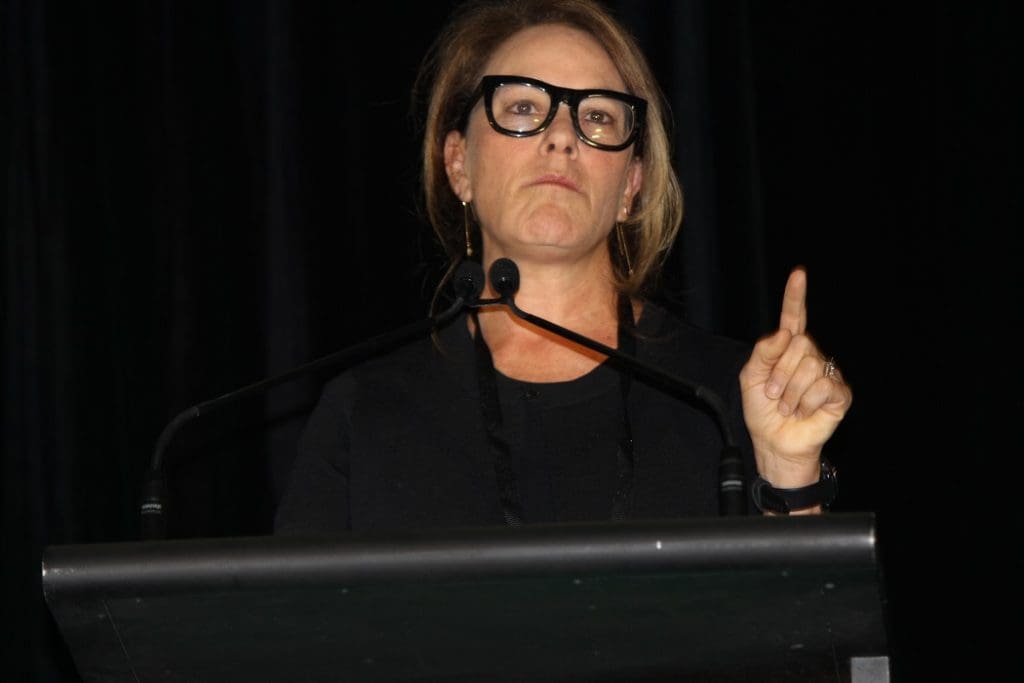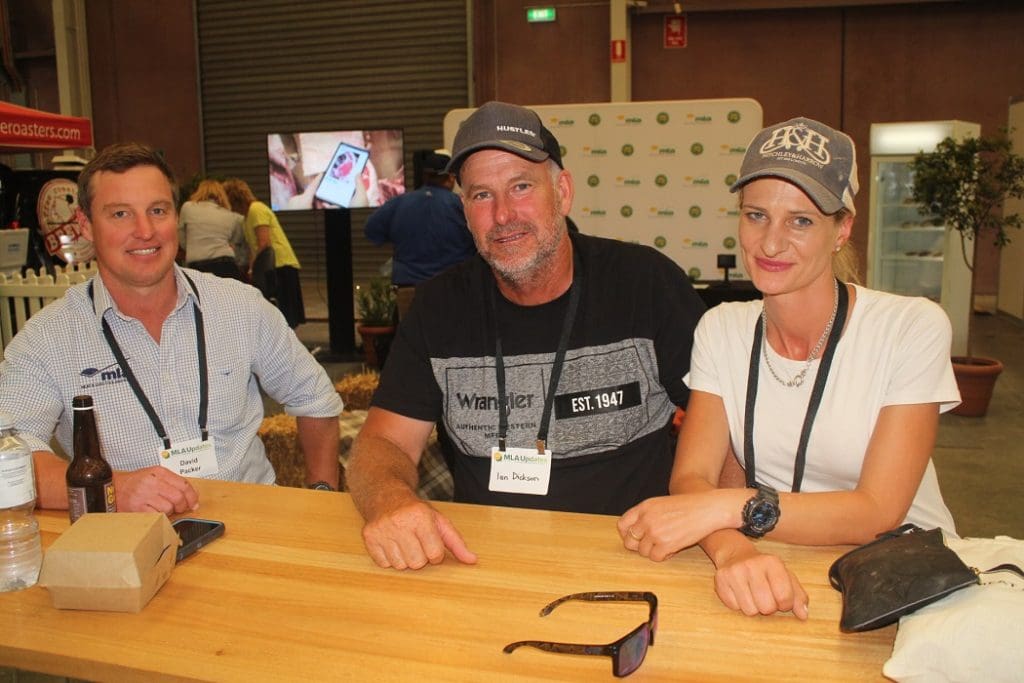
MLA managing director Jason Strong at Bendigo – keep it in perspective.
LIVESTOCK producers were warned to keep weather and El Niño probability data in perspective with actual conditions and avoid the ‘weaponising’ of forecasts to negatively affect industry sentiment.
At the Meat and Livestock Australia Update in Bendigo today, MLA managing director Jason Strong said the industry could be profitable and look after the environment.
To the background of livestock market oversupply driven in part by fear of El Niño conditions, but recent and forecast rainfall across much of the country, Mr Strong said in the last year the sentiment or confidence in the industry and the market had got out of step with the physical conditions.
“It’s created a really difficult and challenging environment for us.
“This discussion around El Niño has been one that has been really destructive around the sentiment in the industry,” he said.
“I think some of it has come from having three fantastic years it was hard to believe that anything apart from a terrible result in the next year was going to be possible.
“There was so much discussion about El Niño must be coming next and it wasn’t until September when we actually got there…,” he said.
Mr Strong said the various weather maps showing the probability of having higher than average temperatures or of exceeding median rainfall levels needed to be kept in perspective.
“Having the knowledge about what happens or what is potentially happening with our environment are incredibly valuable tools, but they nearly get weaponised in the way that we actually think about the industry and the sentiment.
“It’s a terrible thing that we’ve seen impact on so much of the market sentiment this year,” he said.
“If you listen to some of the commentary or perspectives around El Nino it’s going to be hotter and drier and it’s never raining again – and that’s really not the case.”
He said the weather information was valuable and could help in managing resources and biomass.
“Keeping perspective around having so much more information is important for us.”
Mr Strong said the industry was experiencing challenging market conditions, but although livestock indicators were down year-on-year – about 50 percent, many had risen 20-35pc in the last 30 days.
“We don’t tend to celebrate the successes and the progresses, as well as we celebrate the negatives.”
No meat pricing questions for Woolworths director

Woolworths director Holly Kramer – climate is number one shareholder concern.
Woolworths director and sustainability chair Holly Kramer was not asked any questions about pricing of retail lamb and beef cuts after her presentation on ‘Sustainability from paddock to plate’ and after her session she told Sheep Central that she had not been briefed to answer questions on the subject.
Ms Kramer said agriculture was a major contributor to global greenhouse gas emissions – 20-25 percent – it also had an important role to play in the transition to a low carbon world and is increasingly the provider of some of the most important solutions.
Ms Kramer said she spent a lot of her time focussing on sustainability issues in her board roles on Woolworths, Fonterra, ANZ, genetic tech company Nbryo and advisory company Pollination.
She has been a full-time director since 2015 and in that time sustainability has grown from being a side issue to where in shareholder roadshows climate was the number one topic on the investors’ minds.
“And that’s all shareholders.”
She said directors had a fiduciary responsibility to their companies and had to recognise the risk that climate represented to their businesses, whether operationally or “the risk of not doing enough.”
She said mandatory reporting on emission requirements, risks and strategies is coming into New Zealand in 2024 and to Australia in 2025.
“We are also more exposed to the risk of doing nothing or overpromising, also known as greenwashing.”
Ms Kramer Australian farmers are proactively engaging in greenhouse gas solutions, but she urged farmers to become informed. She said farmers sometimes can sell their reductions as offsets but companies might want to use them as insets.

MLA’s MSA program manager David Packer, left, with MSA beef feedlot award winners Ian Dickson and Renee Bergamin at the MLA Update in Bendigo.

Please, ask Ms Kramer to provide irrefutable “real” scientific data (not “expert” analysis) of agriculture being a 20-25 percent major contributor to global greenhouse gas emissions.
Animal agriculture is a contributor to greenhouse gas emissions but there is absolutely no way of knowing if its percentage effects climate change. And the extent to which it contributes to global emissions depends on how researchers and studies define different economic sectors, and whether they incorporate things like farming equipment and food exports in the assessment of animal impact.